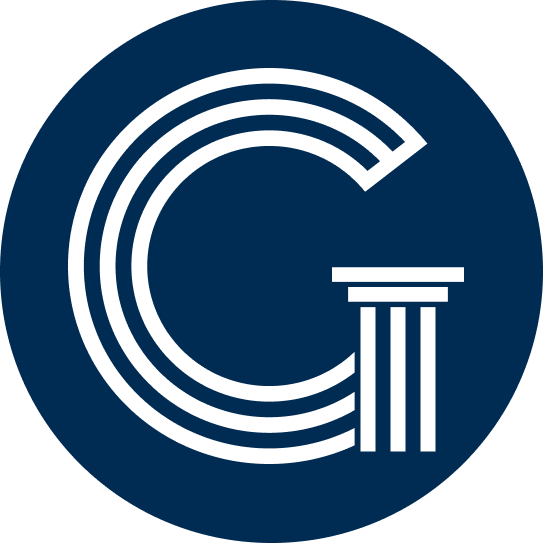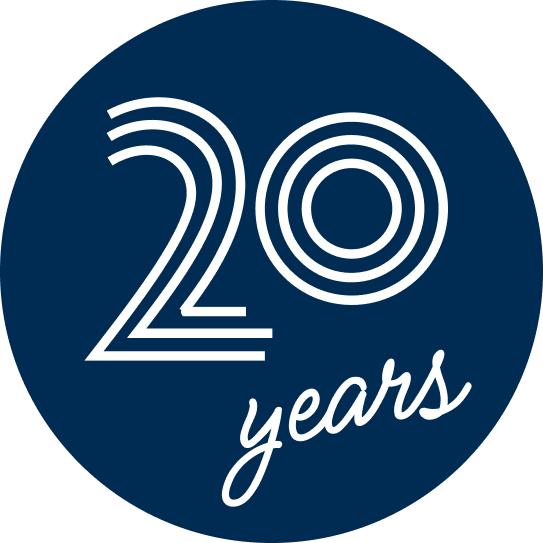- Concord Campus - (925) 687-9555
- Fresno Campus - (559) 222-1903
- Modesto Campus - (209) 521-1821
- Sacramento Campus - (916) 588-2060
- San Jose Campus - (408) 384-7050
- Van Nuys Campus - (747) 200-4567
- Concord Campus - (925) 687-9555
- Fresno Campus - (559) 222-1903
- Modesto Campus - (209) 521-1821
- Sacramento Campus - (916) 588-2060
- San Jose Campus - (408) 384-7050
- Van Nuys Campus - (747) 200-4567
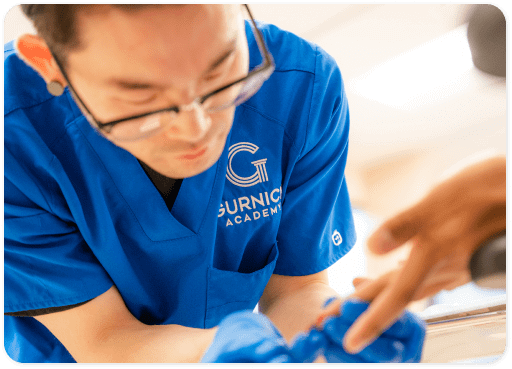
- Concord, CA
- Modesto, CA
8 Months Program*
No Experience Necessary
Job Placement Assistance
Veteran and Military Benefits
*30 Approved Instructional Weeks
| Student Tuition Recovery Fund (Non-Refundable) | $0.00 |
| Registration Fee (Non-Refundable) | $100.00 |
| Books (Non-Refundable, if accessed) | $150.00 |
| Tuition Fee | $14,195.00 |
|
TOTAL PROGRAM COST* *Program Fees are subject to change |
$14,445.00 |
| Student Tuition Recovery Fund (Non-Refundable) | $0.00 |
| Registration Fee (Non-Refundable) | $100.00 |
| Books (Non-Refundable, if accessed) | $150.00 |
| Tuition Fee | $14,195.00 |
|
TOTAL PROGRAM COST* *Program Fees are subject to change |
$14,445.00 |
About the Medical Assistant Program
Program Mission
Gurnick Academy of Medical Arts aims to offer quality allied health and nursing programs that integrate professional skills, career-focused education, and hands-on practical experience by empowering students to develop and achieve their personal and career goals.
Program Description
Gurnick Academy of Medical Arts Medical Assistant graduates join the healthcare field. Medical Assistants are a vital part of the healthcare team, and they complete administrative and clinical tasks in physicians’ offices, hospitals, and other healthcare facilities. Students will practice and become adept at various clinical skills, including patient education, phlebotomy, and performing first aid.
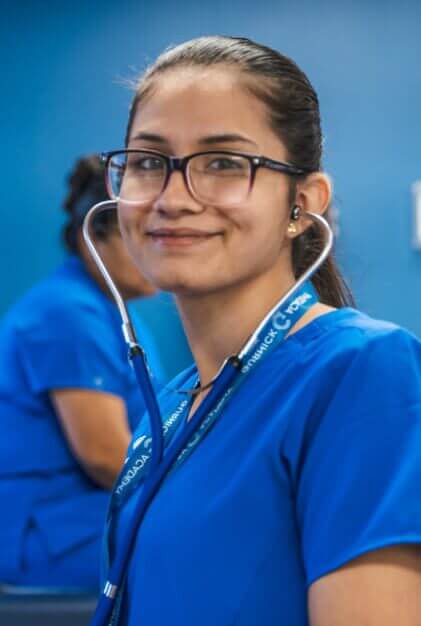
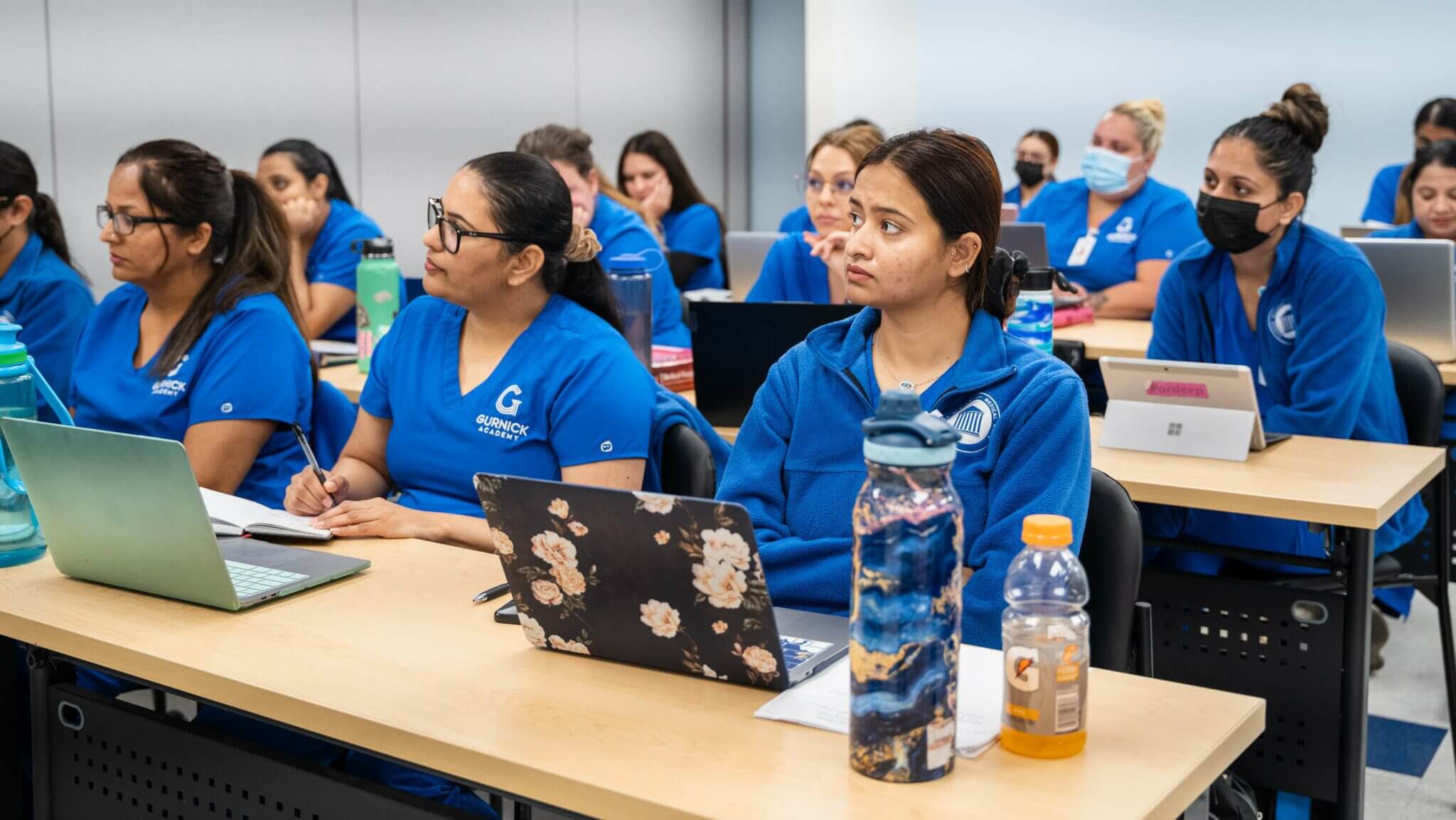
Program Goals and Objectives
Administer quality education and training that develops the potential of each student to become a productive, responsible, and professional member of society, as well as a skilled member of the medical assisting workforce.
Prepare competent entry-level medical assistants in the cognitive (knowledge), psychomotor (skills), and affective (behavior) learning domains.
Foster open access and a supportive environment that encourages student success in the classroom, laboratory, and externship sites.
Encourage professionalism, integrity, and high standards in students.
Adhere to professional standards incorporating the legal and ethical responsibilities of medical assistants.
Train students to organize, prioritize, and delegate care by communicating effectively with medical team members.
Develop and apply knowledge of specific disease conditions to the patients’ prevention, treatment, and well-being.
Equip students for the Certified Clinical Medical Assistant (CCMA-NHA) and Certified EKG Technician (CET-NHA) national exams.
Program Information, Length, and Schedule
The program information, length, and schedule may change. Make sure to read the accompanying Addendum for changes and updates. Check with an Admission Advisor for details.
Gurnick Academy of Medical Arts Medical Assistant program provides a library and classrooms with audiovisual teaching aids, textbooks, and simulators. The Instructor-to-Student ratio is 1:15 in the laboratory, 1:30 during residential lectures, and 1:25 during online lectures. The program consists of 13 courses contained in three modules.
Students must be available four hours daily, Monday through Friday, for didactic and laboratory coursework.
While on externship, students must be available 40 hours a week, Monday through Friday, and they may be required to accommodate alternative schedules based on facility placement business hours. Students must be able to complete those particular rotations on the schedule provided.
Students receive 231 didactic instruction, 345 laboratory instruction, and 180 clinical externship hours. This allows students to apply the lecture topics and hands-on lab skills in practical use when placed in a healthcare facility. 192.5 hours will be spent outside work time.
The curriculum provides students with the technical, clinical, and interpersonal skills necessary to succeed in the medical assisting field. A certificate is awarded upon program completion. The expected program completion time is 30 weeks, excluding holidays and vacation times.
Class times can and may be rescheduled to ensure on-time program completion and fulfillment of required program hours.
Lab hours are done with daily theory delivery and are conducted under instructor guidance and supervision.
Students receive Certification Exam tutorial materials and practice examinations. These tools are utilized throughout the first 24 weeks of the program to support student preparation for the certification exam.
Specific distance education hours are designated each week for students to review key concepts to prepare for the examination.
Further, the resulting diagnostic data is utilized to counsel and guide students to strengthen their knowledge in each examination area.
The clinical externship includes student placement in a facility that performs various skills and provides exposure to theory concepts and hands-on practice opportunities. This marks the transition from being a student to becoming a medical assistant.
The externship is a practicum without pay to help students apply learned classroom skills. Students will have various tasks to perform and document for verification purposes. Facility personnel at the site verify daily attendance and performance.
The instructor will assign work correlating daily theory topics and skills. Assignments will vary daily according to topics and will be done on students’ time and given due dates.
The Medical Assistant Program is blended with residential and online courses and labs, including hands-on demonstrations.
Lecture and practical skills include but are not limited to:
- PowerPoint presentations
- Group discussions
- Audiovisual presentations
- Visible body animations
- Clicker technology for remediation and testing
- Video presentations
- Demonstrations
- Skill practices
- Return demonstrations
Requirements
- Admission Requirements
- Performance Requirements
- Graduation Requirements
Please review the following requirements: General Admission Requirements for all programs.
- Be at least 17 to be admitted to the program with parent or guardian consent. Applicants must be at least 18 at the beginning of the Clinical Externship.
- Submit an essay (no longer than one page, double-spaced, typed, or handwritten) that describes the following:
- Reasons for the applicant’s desire to become a Medical Assistant;
- Personal attributes the applicant possesses that will support the applicant’s ability to complete the MA program;
- People, routines, and resources the applicant has to uphold the applicant’s efforts throughout the program.
- Some campuses (such as if the applicant pool might be larger than the number of available seats at the desired campus location) may require an additional step: an interview with the MA Program Supervisor, Program Coordinator, or designee.
Please review the following requirements: General Performance Requirements for all programs.
Each program has physical and non-physical requirements to ensure our students and patients’ safety and welfare. Almost all of our students (check with an Admission Advisor if applicable) must be able to:
- Handle stressful situations related to technical and procedural standards and patient care situations.
- Respond quickly and appropriately to emergencies using the English language.
- Communicate effectively with patients and staff using clear English in verbal and written forms.
- Read and interpret (or learn how to) patient charts and requisitions.
- Tolerate strong, unpleasant odors.
- Provide physical and emotional support to the patients during procedures.
- Report clearly and legibly through progress notes in patient charts.
- Meet class standards for successful course completion.
- Collect, interpret, and integrate data about patients.
- Recognize and respond appropriately to individuals of all ages, genders, and races from all socioeconomic, religious, and cultural backgrounds.
- Cope with heavy workloads, demanding patients, and life-threatening clinical situations.
- Recognize and respond appropriately to potentially hazardous situations.
- Demonstrate the physical and emotional capacity to work a 40-hour week on the clinical rotation.
- Behave ethically, competently, compassionately, and professionally in the classroom and the clinic.
- Lift/carry:
- 1–5 lbs. frequently—image receptors, lead aprons, files.
- 20–50 lbs. occasionally—patient transfers and patient positioning.
- 50–70 lbs. rarely to occasionally—patient transfers.
- Stand and walk for up to eight (8) hours per day.
- Carry a minimum of 20 pounds (9.07 kg) while walking a distance of 100 feet (30.48 m).
- Bend or flex the upper trunk forward to 45 degrees and the lower torso into a squatting position.
- Rotate the upper trunk up to 30 degrees to the right and left.
- Reach at least 72 inches (1.83 m) above floor level or an entire arm’s reach.
- Utilize the sense of hearing to communicate effectively with the patients and the healthcare team.
- Utilize the sense of vision in all hospital lighting levels, varying from low illumination to bright light levels.
- Sit in class for up to six (6) hours per day.
- Palpate anatomical structures and handle injured body parts without causing injury to the patient.
- During exercise, give manual resistance to a patient’s arm, leg, or trunk.
- Move with adequate agility and speed to ensure patient safety.
- Walk and balance well enough to help patients walk and transfer with or without equipment while preventing injury to patients and themselves.
- Safely grasp and manipulate small objects and set dials on electrical equipment.
- Use visual, auditory, and tactile senses to observe patients and collect and interpret data.
- Respond to warning sounds, machine alarms, and calls for help.
The following requirements must be met for a student to graduate from the Medical Assistant program at Gurnick Academy of Medical Arts:
- The successful completion of all program courses and hours.
- All financial obligations, including tuition and textbook charges, have been met.
Please review the following requirements: General Admission Requirements for all programs.
- Be at least 17 to be admitted to the program with parent or guardian consent. Applicants must be at least 18 at the beginning of the Clinical Externship.
- Submit an essay (no longer than one page, double-spaced, typed, or handwritten) that describes the following:
- Reasons for the applicant’s desire to become a Medical Assistant;
- Personal attributes the applicant possesses that will support the applicant’s ability to complete the MA program;
- People, routines, and resources the applicant has to uphold the applicant’s efforts throughout the program.
- Some campuses (such as if the applicant pool might be larger than the number of available seats at the desired campus location) may require an additional step: an interview with the MA Program Supervisor, Program Coordinator, or designee.
Please review the following requirements: General Performance Requirements for all programs.
Each program has physical and non-physical requirements to ensure our students and patients’ safety and welfare. Almost all of our students (check with an Admission Advisor if applicable) must be able to:
- Handle stressful situations related to technical and procedural standards and patient care situations.
- Respond quickly and appropriately to emergencies using the English language.
- Communicate effectively with patients and staff using clear English in verbal and written forms.
- Read and interpret (or learn how to) patient charts and requisitions.
- Tolerate strong, unpleasant odors.
- Provide physical and emotional support to the patients during procedures.
- Report clearly and legibly through progress notes in patient charts.
- Meet class standards for successful course completion.
- Collect, interpret, and integrate data about patients.
- Recognize and respond appropriately to individuals of all ages, genders, and races from all socioeconomic, religious, and cultural backgrounds.
- Cope with heavy workloads, demanding patients, and life-threatening clinical situations.
- Recognize and respond appropriately to potentially hazardous situations.
- Demonstrate the physical and emotional capacity to work a 40-hour week on the clinical rotation.
- Behave ethically, competently, compassionately, and professionally in the classroom and the clinic.
- Lift/carry:
- 1–5 lbs. frequently—image receptors, lead aprons, files.
- 20–50 lbs. occasionally—patient transfers and patient positioning.
- 50–70 lbs. rarely to occasionally—patient transfers.
- Stand and walk for up to eight (8) hours per day.
- Carry a minimum of 20 pounds (9.07 kg) while walking a distance of 100 feet (30.48 m).
- Bend or flex the upper trunk forward to 45 degrees and the lower torso into a squatting position.
- Rotate the upper trunk up to 30 degrees to the right and left.
- Reach at least 72 inches (1.83 m) above floor level or an entire arm’s reach.
- Utilize the sense of hearing to communicate effectively with the patients and the healthcare team.
- Utilize the sense of vision in all hospital lighting levels, varying from low illumination to bright light levels.
- Sit in class for up to six (6) hours per day.
- Palpate anatomical structures and handle injured body parts without causing injury to the patient.
- During exercise, give manual resistance to a patient’s arm, leg, or trunk.
- Move with adequate agility and speed to ensure patient safety.
- Walk and balance well enough to help patients walk and transfer with or without equipment while preventing injury to patients and themselves.
- Safely grasp and manipulate small objects and set dials on electrical equipment.
- Use visual, auditory, and tactile senses to observe patients and collect and interpret data.
- Respond to warning sounds, machine alarms, and calls for help.
The following requirements must be met for a student to graduate from the Medical Assistant program at Gurnick Academy of Medical Arts:
- The successful completion of all program courses and hours.
- All financial obligations, including tuition and textbook charges, have been met.
Career Services






Medical Assistant Program Outline
| Course Number | Title | Clock Hours | Outside of School Preparation Hours | Total Clock Hours | Quarter Credit Hours |
|---|---|---|---|---|---|
| MA 100 | Front Office Records Management | 82.5 | 27.5 | 110.0 | 5.5 |
| MA 101 | Front Office Finances | 82.5 | 27.5 | 110.0 | 5.5 |
| MA 102 | Front Office Medical Professional | 82.5 | 27.5 | 110.0 | 5.5 |
| MA 107 | Human Anatomy and Physiology for MA I | 19.0 | 7.5 | 26.5 | 1.5 |
| MA 108 | Human Anatomy and Physiology for MA II | 19.0 | 7.5 | 26.5 | 1.5 |
| MA 109 | Human Anatomy and Physiology for MA III | 18.0 | 7.5 | 25.5 | 1.5 |
| MA 120A | Medical Terminology A | 15.0 | 5.0 | 20.0 | 1.0 |
| MA 120B | Medical Terminology B | 15.0 | 5.0 | 20.0 | 1.0 |
| MA 200 | Back Office Clinical Foundations | 80.0 | 25.0 | 105.0 | 5.0 |
| MA 201 | Back Office Clinical Skills | 80.0 | 25.0 | 105.0 | 5.0 |
| MA 202 | Back Office Clinical Laboratory | 82.5 | 27.5 | 110.0 | 5.5 |
| MA 300 | Clinical Externship | 180.0 | — | 180.0 | 6.0 |
| Total | 756.0 | 192.5 | 948.5 | 44.5 |
Licensure, Certification, and Registry Disclaimer
California does not require that medical assistants be certified, but such a certificate may increase hiring chances. The national CCMA exam is taken during the program upon completing didactic coursework.
While it is not required for students to pass the CCMA exam to work as a medical Assistant, students who pass the exam and meet graduation requirements will be eligible to work as Certified Medical Assistants.
*Gurnick Academy of Medical Arts has not determined if any programs fulfill the educational requirements for specific professional licensure or certification required for employment outside California unless identified by the program below.
It is recommended that students located in or planning to relocate to a state apart from where the program’s physical campus is located research any certification or employment requirements for their intended state.
Certification for Medical Assistants
Find more information about Certification for Medical Assistants in California.
Job Outlook and Salary
View the job profiles of the O*Net Online 31-9092.00 Medical Assistants and O*Net Online 43-6013.00 Medical Secretaries and Administrative Assistants for general information about the professions. Find information about the salary data in California and the major cities near the program’s campuses.
Local Wages for Medical Assistants in California
- Local Wages for Medical Assistants in Fresno, CA
- Local Wages for Medical Assistants in Los Angeles—Long Beach-Anaheim, CA
- Local Wages for Medical Assistants in Modesto, CA
- Local Wages for Medical Assistants in Sacramento—Roseville—Arden-Arcade, CA
- Local Wages for Medical Assistants in San Francisco—Oakland-Hayward, CA
- Local Wages for Medical Assistants in San Jose—Sunnyvale-Santa Clara, CA
Accreditation and Approval
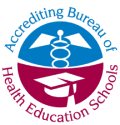
Gurnick Academy of Medical Arts holds national institutional accreditation by the Accrediting Bureau of Health Education Schools (ABHES). ABHES accreditation does not include continuing education courses.
ABHES Mailing Address:
6116 Executive Blvd., Suite 730
North Bethesda, MD 20852
ABHES Phone: 301-291-7550
ABHES Email: Info
ABHES Website: abhes.org
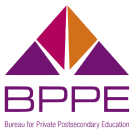
Gurnick Academy of Medical Arts is a private institution approved to operate by the California Bureau for Private Postsecondary Education. Approval to operate means the institution is compliant with the minimum standards in the California Private Postsecondary Education Act (CPPEA) of 2009 (as amended) and Division 7.5 of Title 5 of the California Code of Regulations. CPPEA governs the Bureau for Private Postsecondary Education.
The Office of Student Assistance and Relief is available to support prospective students, current students, or past students of private postsecondary educational institutions in making informed decisions, understanding their rights, and navigating available services and relief options. The office may be reached by calling (888) 370- 7589, option #5, or by visiting osar.bppe.ca.gov.
BPPE Mailing Address:
1747 N. Market Blvd., Suite 225
Sacramento, CA 95834
BPPE Phone: 888-370-7589
BPPE Email: General
BPPE Website: bppe.ca.gov
Financial Aid

Gurnick Academy of Medical Arts aims to help every student obtain Financial Aid* to attend their chosen program. Gurnick Academy of Medical Arts participates in various federal and state student financial assistance programs.
The financial aid programs are designed to assist students with inadequate financial resources to meet their education’s total cost. Each campus has a Financial Aid Advisor who can help students with any financial aid questions.
For more information, please visit our Financial Aid page.
*for those who qualify
Student’s and Graduate’s Testimonials

Noela Mikaill
Medical Assistant Program
I was blessed to be around excellent instructors, classmates, faculty, and mentors who guided my journey.
Persistence and dedication are what Gurnick taught me. I will forever be grateful to my instructors and mentors, who have never stopped believing in me.

Brenda Oliva
Medical Assistant Program
I was lucky enough to have the opportunity to complete my externship at my dream site, UC Davis Medical Center!
The whole Gurnick team helped make that possible, and I am forever grateful for that because it is opening doors for future employment to where I’ve always envisioned myself working.

Lorie Huggins
Medical Assistant Program
I’m grateful to have great teachers to encourage, support, and guide me on a challenging journey to reach my dream. Thank you Ms, Freitas and Mrs. Fizzell.
One of the things that I have enjoyed the most about Gurnick Academy’s MA program is learning anatomy and physiology and how the body systems tie together.
Frequently Asked Questions
Please choose from the dropdown to review a category of FAQs
-
Helping multiple modern wellness environments, Medical Assistants work in physicians’ offices, outpatient clinics, hospitals, assisted-living facilities, and private and government-run healthcare centers. A Certified Medical Assistant is “a professional who performs administrative and routine clinical tasks in a medical setting.”
Yet, in some health environments, the role is categorically separated into two independent positions: A) an administrative Medical Assistant conducting office tasks solely, or B) a clinical Medical Assistant singularly functioning as a medical support person.1
Citations
1^a, b, c Staff. “Technological Tools and Equipment Used by Medical Assistants.” Medical Assistant Training. April 3, 2013. (Accessed May 20, 2021). -
According to the Medical Board of California, per Title 16 California Code of Regulations, sections 1366.3(a)(1) and 1366.3 (a)(2), a Medical Assistant may train in one of two ways, including the following:
Section 1366.3(a)(1), training under a licensed physician or podiatrist, who shall ascertain the proficiency of the Medical Assistant, or under a registered nurse, licensed vocational nurse, physician assistant, or a qualified Medical Assistant acting under the direction of a licensed physician or podiatrist.1
Section 1366.3 (a)(2), in a secondary, postsecondary, or adult education program in a public school authorized by the Department of Education, in a community college program provided for in Part 48 of Division 7 of the Education Code, or a postsecondary institution accredited by an accreditation agency recognized by the United States Department of Education or approved by the Bureau for Private Postsecondary Education.1
Citations
1^ a, b n.d. “Medical Assistants-Allied Health|Medical Board of California.” Medical Board of California. (Accessed June 9, 2021). -
Stressors and difficulties can only be validated through individual experiences. Both programs require a commitment to their professions.
Gurnick Academy’s Medical Assistant Program is eight (8) months* in duration and consists of seven courses. The program enrolls on a rolling basis every four weeks.
A typical day involves lectures and laboratory work. Classes are a mix of two on-campus sessions, each lasting four hours (day and evening classes available), and distance education sessions that provide time flexibility for students who work or manage other responsibilities while in school.
On the other hand, students must first take the Vocational Nurse Diploma program to be eligible for the ASVN program at Gurnick Academy. The diploma program is 13 months or 52 approved instructional weeks.
After this, students must earn an A.S. in Vocational Nursing, which takes eight months* to complete. Therefore, a Vocational Nurse program is much longer than the eight months* needed for the Medical Assistant program.
*30 Approved Instructional Weeks
-
Helping multiple modern wellness environments operate, Medical Assistants work in physicians’ offices, outpatient clinics, hospitals, assisted-living facilities, and private and government-run healthcare centers.”1 The role is often a healthcare hybrid, with the Medical Assistant performing clerical tasks and another part practicing medical service.
These professionals generally perform an array of duties. From answering phone calls and emails to physically aiding a nurse or physician, medical assistants conduct essential organizational tasks to facilitate and support overall healthcare operations. Generally, a Medical Assistant helps to ensure processes function more efficiently.2
Citations
1 Staff. “Technological Tools and Equipment Used by Medical Assistants.” Medical Assistant Training. April 3, 2013. (Accessed May 20, 2021).
2 “Medical Assistant Job Description: Duties, Education, and Experience Required.” 2020. Indeed.com. (Accessed February 22, 2020). -
According to O*NET, the top tools for Medical Assistants are the following:
- Body plethysmographs (lung function and capacity testing);
- Eye charts or vision cards—Snellen eye charts;
- Eye occluders—handheld occluders;
- Gait belts for rehabilitation or therapy—gait belts;
- Hypodermic needle—intradermal needles; Intramuscular needles; subcutaneous hypodermic needles;
- Medical gas cylinders or related devices—oxygen tanks;
- Mercury blood pressure units—sphygmomanometer; manual blood pressure measurement equipment;
- Ophthalmic lensometers—lensometers;
- Ophthalmoscopes or otoscopes or scope sets—ophthalmoscopes; otoscopes;
- Opticians tools—metric rules.1
Citations
1 “31-9092.00–Medical Assistants.” O*NET OnLine, National Center for O*NET Development. (Accessed April 26, 2022).
-
You must be at least 17 years old to be admitted to the program and have parent or guardian consent. Applicants must be at least 18 at the beginning of the Clinical Externship.
-
You can fill out our online contact form to have information mailed to you or a school representative contact you. Or you can call us at 1-877-GURNICK.
-
Please click on the link for more info about admission requirements.
-
Learn more about foreign transcript evaluations.
-
Please find more info about the Diploma Evaluations policy in the Catalog and Addendum.
-
To qualify for the MA program, you must pass the CCAT exam.
-
Learn more about the CCAT exam and general admission requirements.
-
All applicants must pass the entrance exam before admission into the program, regardless of degree or background.
-
Please click on the link to learn more about accreditation.
-
Learn more about the Medical Assistant program information, length, and schedule.
-
View the addendum to review all scheduled breaks during the school year.
-
Yes.
-
All externships are unpaid.
-
To view the breakdown of the fees, please see the program fees section.
-
Gurnick Academy of Medical Arts participates in various federal and state student financial assistance programs.
Financial aid is available for those who qualify.
-
The Medical Assistant program is a certificate program.
-
We assist with job placements for all students who complete the program. However, we cannot guarantee employment.
-
Yes, they are health-support professionals. A Certified Medical Assistant is “a professional who performs administrative and routine clinical tasks in a medical setting.”1 Medical Assistants should not be confused with physician assistants, who examine, diagnose, and treat patients under a physician’s supervision.2
Citations
1 “Medical Assistant Job Description: Duties, Education, and Experience Required.” Indeed.com. 2020. (Accessed Feb. 22, 2020).
2 Medical Assistants. Occupational Outlook Handbook. Bureau of Labor Statistics, U.S. Department of Labor. (Accessed May 19, 2021.) -
Beyond helping, caring, and serving others, many medical assistants report general satisfaction with their profession. According to the U.S. News and World Report, Medical Assistants rank #9 in Best Jobs Without a College Degree, #10 in Best Health Care Support Jobs, and #64 in 100 Best Jobs.
Jobs are rated according to their ability to offer an elusive mix of factors.1 Ranking considers salary, job market, future growth, stress, and work-life balance factors.
Citations
1 U.S. News Best Jobs. “Medical Assistant Ranks among Best Jobs of 2019.” Usnews.com. U.S. News and World Report. 2016. (Accessed April 26, 2022). -
According to the official Occupational Handbook, the average base salary for a Medical Assisting role is $35,8501 per year or $17.23 per hour. While compensation may seem modest compared to other healthcare professions, more than 35 percent of medical assistants feel their wages satisfactorily provide a living wage.1
Citation
1^a, b Medical Assistants. Occupational Outlook Handbook. Bureau of Labor Statistics, U.S. Department of Labor. (Accessed May 19, 2021). -
Beyond helping, caring, and serving others, many medical assistants report general satisfaction with their profession. According to U.S. News and World Report Job Rankings, Medical Assistants rank #9 in Best Jobs Without A College Degree—the index rates jobs according to their ability to offer an elusive mix of factors.
According to the report, MAs rank #9 in Best Jobs Without A College Degree, #10 in Best Health Care Support Jobs, and #64 out of 100 Overall Best Jobs. Medical Assistants also receive an overall score 6.0 for salary, job market, future growth, stress, and work-life balance.1
Citations
1 — “Medical Assistant Ranks among Best Jobs of 2019.” Usnews.com, U.S. News, 2016. (Accessed May 10, 2022). -
While we couldn’t locate one specific answer, common complaints by employees seem to be around burnout.
Multiple articles indicate staffing shortages and early retirements by healthcare professionals. However, professional burnout may not be limited to Medical Assistants but all healthcare professionals in general.
-
According to the Bureau of Labor and Statistics, the employment of Medical Assistants is projected to grow 18 percent from 2020 to 2030. The growth is much faster than the average for all occupations.
About 104,400 openings for Medical Assistants are projected each year, on average, over the decade. Many of these openings are expected to result from the need to replace workers who transfer to different occupations or exit the labor force for retirement.1
Citations
1 Bureau of Labor Statistics, U.S. Department of Labor, Occupational Outlook Handbook. Medical Assistants. (Accessed April 26, 2022). -
While no absolutes exist regarding interviews, according to Gurnick Academy Career Services, the following questions are used in the college’s mock interview sessions for Medical Assistant students. These include the following employer questions:
a) Tell me about a challenging situation with a patient and how you handled it.
b) What are your biggest strengths and weaknesses as a Medical Assistant?
c) How would your coworkers/team members describe your work style?
d) What did you learn from past work experiences, and how are they relevant to this position?
e) Provide examples of adapting to various people, situations, and environments.
f) How would you add value to the patient-care experience?
g) Can you work on several assignments at once? How do you handle multitasking?
h) Tell me about a time when you went beyond the call of duty to get a job done.
i) What type of work schedule are you seeking? Are you available to work extra hours? -
Medical Assistants can advance into other areas with training and experience.
According to Indeed.com, career paths they could pursue include healthcare management, administration, nursing, medical billing and coding, medical records, and health information management.1
Also, according to the above source, Medical Assistants may earn additional certification. Possible certifications include Registered Medical Assistant, Certified Clinical Medical Assistant, Certified Medical Administrative Assistant, and Nationally Certified Medical Assistant.
Some Medical Assistants may also pursue specializations in cardiology, OBGYN, ophthalmology, podiatry, and pediatric care. Others decide to obtain associate or bachelor’s degrees and follow nursing routes.1
Citations
1^a, b, “Medical Assistance Advancement: Six Ways to Advance Your Career.” Indeed Career Guide, Indeed. May 10, 2021. (Accessed May 10, 2022).
-
Within California, the following are considered invasive procedures and not within a Medical Assistant’s scope of practice.1 In California, Medical Assistants cannot do the following procedures:
- Start or disconnect IVs or administer injections or medication into an IV;
- Chart pupillary responses;
- Read, interpret, or diagnose symptoms or test results;
- Insert urine catheters.1
Citation
1^a b “FAQs|MBC.” Medical Board of California. Www.mbc.ca.gov. The State of California. (Accessed April 26, 2022). -
Yes. According to the American Board of California, Medical Assistants with the proper training may “perform venipuncture or skin puncture to withdraw blood.”1
Citations
1 “FAQs|MBC.” Www.mbc.ca.gov, State of California Health Board. (Accessed May 10, 2022). -
No. Within California, Medical Assistants may call in already prescribed refills to a pharmacy under the direct supervision of the physician or podiatrist.
The refill must be exact, have no changes in the dosage levels, and be documented in the patient’s chart as a standing order. Medical Assistants may not call in new prescriptions or those that have any changes.1
Citations
1 “FAQs|MBC.” Medical Board of California. Www.mbc.ca.gov. The State of California. (Accessed April 26, 2022). -
According to the Medical Board of California, if the Medical Assistant has undergone the appropriate training, they can administer scheduled drug injections once the licensed person has verified the correct medication and dosage and the injection is intramuscular, intradermal, or subcutaneous.
The supervising physician or podiatrist must be on the premises. (Business and Professions Codes, section 2069.)1
Citations
1 “FAQs|MBC.” Medical Board of California. Www.mbc.ca.gov, State of California. (Accessed April 26, 2022).
Have Questions? We are here to help!
Apply Now Form
External Resources for the Medical Assistant Program
If you are a person who is deaf, hard of hearing, or speech-disabled, please Dial 711 to place a call through California Relay.
